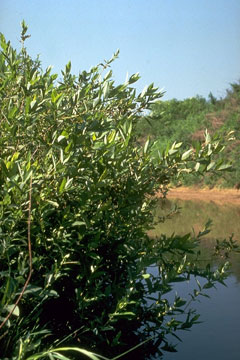Industrial waste dump becomes biofuel source
mongabay.com
February 1, 2007
Shrub willows growing on land that was once considered an industrial waste site will be used to produce green energy according to researchers at the SUNY College of Environmental Science and Forestry (ESF).
“We’re using society’s castoffs, residuals such as biosolids and yard waste mulch, to improve the quality of the soil,” said Douglas J. Daley, director of the ESF-based SUNY Center for Brownfield Studies in Syracuse, N.Y. “This is a system that helps close the loop, using waste products to improve the soil and benefit both the economy and the environment.”
The harvest marks the first time that willow shrubs have been grown on suck degraded soils, which are characterized by alkaline conditions. The key, said ESF’s Dr. Timothy A. Volk, was fertilization of the site using biosolids from a wastewater treatment operation. Fertilization enhanced the growth of the willow shrubs, which normally grow poorly in alkaline soils.
 Dwarf willow (Salix cottetii), courtesy of the USDA. |
Next week ESF will prepare the shrubs for use in the 19-megawatt electric power facility at Lyonsdale Biomass Plant in Lyons Falls, New York.
ESF says the biomass project could reduce the amount of salt that accumulatess in groundwater and runs off into local creeks, inrcrease local biodivresity, and “turn the settling basins into an area that could produce sustainable woody biomass for the production of renewable ‘green’ energy and biofuels.”
This article is based on a news release from the SUNY College of Environmental Science and Forestry